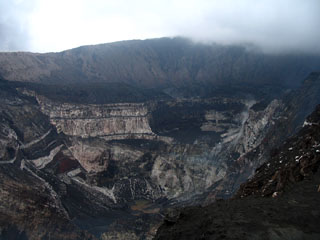Report on Ambrym (Vanuatu) — 20 July-26 July 2011
Smithsonian Institution / US Geological Survey
Weekly Volcanic Activity Report, 20 July-26 July 2011
Managing Editor: Sally Sennert.
Please cite this report as:
Global Volcanism Program, 2011. Report on Ambrym (Vanuatu) (Sennert, S, ed.). Weekly Volcanic Activity Report, 20 July-26 July 2011. Smithsonian Institution and US Geological Survey.
Ambrym
Vanuatu
16.25°S, 168.12°E; summit elev. 1334 m
All times are local (unless otherwise noted)
Based on pilot observations and analyses of satellite imagery, the Wellington VAAC reported that on 19 July an ash plume from Ambrym rose to an altitude of 3 km (10,000 ft) a.s.l. and drifted 185 km NW.
Geological Summary. Ambrym is a large basaltic volcano with a 12-km-wide caldera formed during a major Plinian eruption with dacitic pyroclastic flows about 1,900 years ago. A thick, almost exclusively pyroclastic sequence, initially dacitic then basaltic, overlies lava flows of a pre-caldera shield volcano. Post-caldera eruptions, primarily from Marum and Benbow cones, have partially filled the caldera floor and produced lava flows that ponded on the floor or overflowed through gaps in the caldera rim. Post-caldera eruptions have also formed a series of scoria cones and maars along a fissure system oriented ENE-WSW. Eruptions have been frequently reported since 1774, though mostly limited to extra-caldera eruptions that would have affected local populations. Since 1950 observations of eruptive activity from cones within the caldera or from flank vents have occurred almost yearly.

